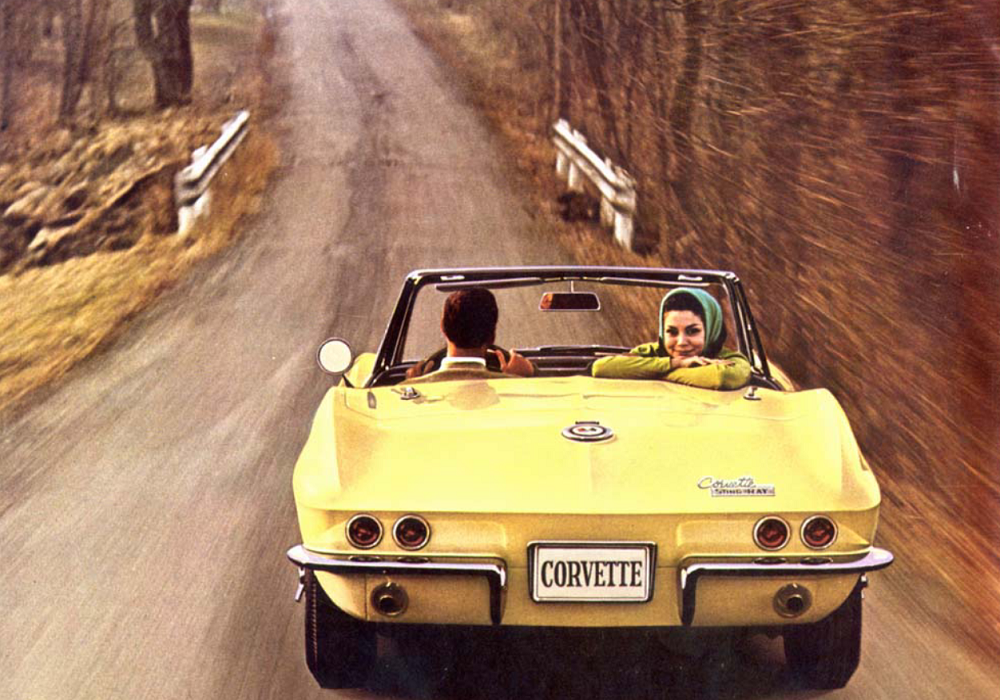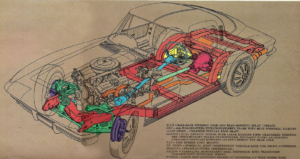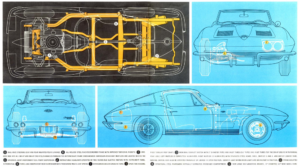Quick Guide: C2 Corvette Specs
As part of our ongoing Corvette retrospective series, here’s a quick guide to C2 Corvette specs with performance data from original sources!
If the C1 Corvette was the car learning to walk, then the C2 Sting Ray broke into a full-on sprint. By 1967, the Corvette soared in popularity from an expensive but undeniably fast niche sports car to an outstanding all-around performance vehicle. Featuring a plethora of options and support (both official and unofficial), the C2 effectively cornered the higher-end sports car market in the US for the majority of its production run. The Sting Ray’s notoriety led it to become an international sensation, with eye-watering performance figures and looks to rival the finest Italian cars of the day, for a fraction of the price. It’s largely thanks to the Sting Ray’s popularity that the Corvette didn’t slowly fade into obscurity.
Production Dates
- August 1962 – July 1967.
Initial Price
- $4,037 (1963).
- $4,240 (1967).
Engines
All ratings are based on option packages as listed in GM brochures and owners’ manuals. The actual horsepower figures may vary. Also note that the indicated years list the vehicles’ model year, not the date of production. As such, some listings may not be accurate to early or late-production vehicles for those model years.
- 327c.i. carbureted V8 (250hp – 340hp) 1963.
- 327c.i. fuel-injected V8 (360hp) 1963.
- 327c.i. carbureted V8 (250hp – 365hp) 1964 – 1965.
- 327c.i. fuel-injected V8 (375hp) 1964 – 1965.
- 327c.i. carbureted V8 (300hp – 350hp) 1966.
- 327c.i. carbureted V8 (300hp – 360hp) 1967.
- 396c.i. carbureted V8 (425hp) 1965.
- 427c.i. carbureted V8 (390hp – 425hp) 1966.
- 427c.i. carbureted V8 (390hp – 435hp) 1967.
Transmissions
- 3-speed manual (Standard equipment for all model years) Ratios:
- 1st: 2.54:1
- 2nd: 1.50:1
- 3rd: 1.00:1
- Reverse: 2.63:1
- Powerglide 2-speed automatic ratios:
- 1st and Reverse: 1.76:1
- 2nd: 1.00:1
- 4-speed manual (M20) ratios:
- 1st: 2.52:1
- 2nd: 1.88:1
- 3rd: 1.47:1
- 4th: 1.00:1
- Reverse:2.59:1
- 4-speed manual (M21) ratios:
- 1st: 2.20:1
- 2nd: 1.64:1
- 3rd: 1.27:1
- 4th: 1.00:1
- Reverse: 2.26:1
Chassis
- Frame:
- Box-frame with five-crossmember reinforcement and stabilizer bars (Heavy-duty stabilizers optional equipment).
- Brakes:
- 11-inch vacuum drum brakes (standard), power-assisted drums (optional) 1963-1964.
- 11.75-inch disc brakes (standard) 1965-1967, optional heavy-duty and power-assisted packages.
- Suspension:
- Front: Independent, direct bag-type shock absorbers, variable-rate coil-over springs.
- Rear: Independent, three-link, transverse-type variable-rate multi-leaf springs.
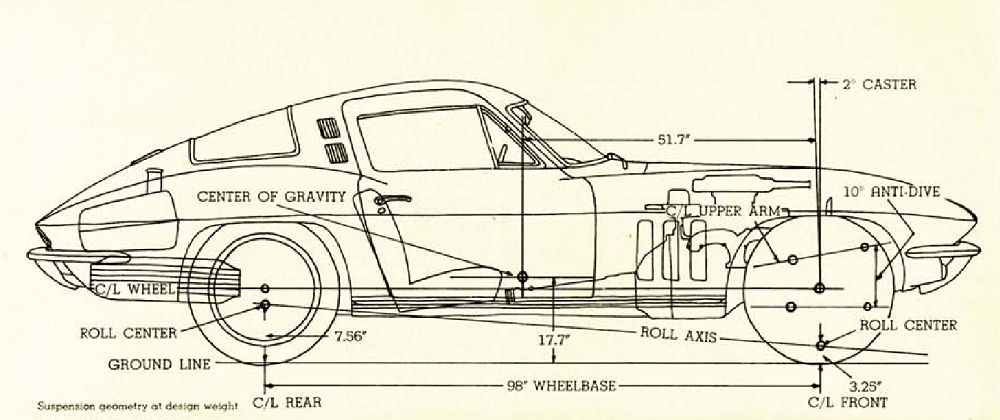
Performance Figures (All times with 1967 equipped with L88 427c.i. 435hp-rated and 4-speed close-ratio manual)
- 0-60mph: 4.9s (estimated)
- 0-100mph: 11.4s
- Top speed: 142mph (estimated)
- ¼ mile (factory tires): 13.4s at 108mph
Quick Facts
- 1963: The “Split Window” year. This year features one of the most sought-after packages, the Z06, at 199 produced, 6 of which were intended for Le Mans.
- 1964: Two simulated hood intakes deleted. One-piece rear window.
- 1965: One-year only for 396c.i. engine. Disc brakes introduced. Drums still available as a (very unpopular) credit option. Last year for a fuel injection (in this generation).
- 1966: Minor facelift. 427c.i. engine introduced. New grate-style grille. Hood-mounted logo.
- 1967: Final model year. L88-option most sought-after package from this year. Similar to the early Street Hemi, this engine is essentially a racing engine for the road.
Why It’s Important
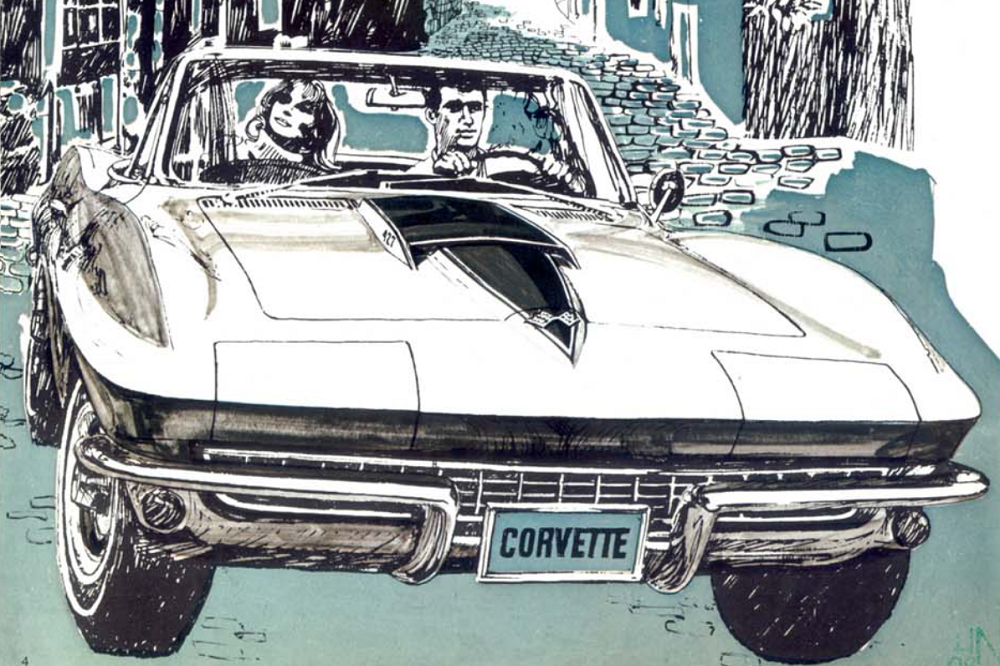
The C2 Sting Ray Corvette remains, in many motorists’ minds, one of the most beautiful Corvettes to date. A total of 117,964 units left the factory in five years, dwarfing the C1’s production totals by a long shot. This Corvette marked a number of crucial innovations which pushed the nameplate above and beyond its original design parameters. The C2 was the first Corvette with a big-block engine, the first with disc brakes, the first with all-independent suspension, and so on. Its marketing catered to those seeking a thrilling, comfortable ride. However, with the correct boxes checked off, the car grew very long legs, indeed. Famous limited-quantity C2s such as the Grand Sport, Z06, and L88-package dominated several motorsport disciplines, with low-11s ¼ mile times easily reachable with factory engines. And the 427 engine in general was lauded by the public and press alike for its raw power, reliability, and smooth delivery. Overall, from the venerable engines (of which virtually none are “bad seeds”) to the gorgeous body lines, the C2 remains one of the highest-points of Chevrolet’s sports car history.
Acceleration tables available at: Automobile Catalog

